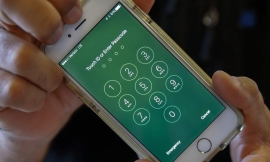A new study has revealed that the universe is becoming less favorable for the emergence of life as it ages. Researchers from the Max Planck Institutes for Solar System Research and Chemistry and the University of Göttingen investigated the correlation between the metallicity of stars and their planets’ ability to build up a protective ozone layer. The study found that stars made of less heavy elements emit more life-threatening UV radiation. However, dense ozone layers can form around these stars to provide protection. The more heavy elements there are in stars, the thinner the protective ozone layers.
Ozone is an important protective layer, not just on Earth. The researchers wanted to find out which stars would be particularly worthwhile in the search for extraterrestrial life. They discovered that the heavy elements are formed inside dying stars, and each generation therefore exhibits higher metallicity, which leads to a more hostile universe for life. Despite this, there is hope as we already know of a star that accommodates complex and interesting life forms on at least one of its planets.
The combination of three oxygen atoms, forming an ozone layer, on Earth protects all life from cell-damaging UV radiation. The researchers found that ultraviolet radiation in combination with oxygen can both destroy ozone and create it. In the case of stars with relatively few heavy elements, UV-C radiation predominates, which is why they are likely to create a dense ozone layer on planets. In the case of metal-rich stars, this protective shell is significantly poorer.
The ratio of the two variants of ultraviolet radiation depends on the metallicity of the stars, i.e., the content of heavy elements. The research team discovered that the universe is becoming less favorable for life as it ages. Stars made up of fewer heavy elements emit more life-threatening UV radiation but can form dense ozone layers. However, in stars with more heavy elements, the protective ozone layer is considerably poorer.
The study’s main objective was to determine which stars would be particularly worthwhile in the search for extraterrestrial life. However, the research group made a far-reaching discovery about the universe becoming less favorable for the emergence of life. The metallicity of stars has a direct correlation with the formation of protective ozone layers around planets. The research paper has been published in the journal Nature Communications.



